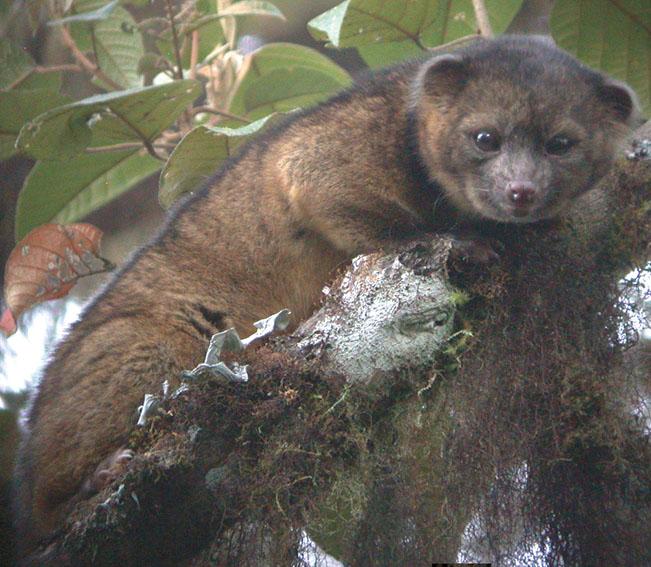An N.C. State professor is among a small group of researchers that recently announced that it had discovered a new species of carnivore in the Western Hemisphere—a feat that has not been accomplished in the past 35 years.
For many years, the olinguito, which lives in the high forest canopies of Ecuador, had been mistakenly identified as another creature, the similarly named olingo.
Roland Kays, a zoology professor at N.C. State and the director of the Biodiversity and Earth Observation Lab at the North Carolina Museum of Natural Sciences, was on the three-person research team that made the discovery.
“Every year or two there’s a new mammal found, but they’re usually bats and rats,” Kays said. “This is basically the first bigger mammal [found] in the New World in years.”
Initially, the discovery was somewhat of an accident.
According to Kays, Kristofer M. Helgen, a zoologist from the Smithsonian Institute, originally set out to try and ascertain the number of different known types of olingos in existence.
“In the process, [Helgen] ran across these completely different specimens that were much smaller, much redder, [and] had different teeth,” Kays said.
Kays said the new species also has much longer hair.
“That’s when [Helgen] realized that there was this yet-undescribed form out there.”
Kays said the two species are actually quite different from each other and therefore was a little surprised that the olinguito had not previously been identified. He said, however, it was difficult to find because the species is so scattered and lives at such high elevations in the trees.
Kays was tapped for the research team as a result of the extensive research he had done on olingos while he was working toward his Ph.D. at the University of Tennessee. Helgen recruited both Kays and Ecuadorian zoologist Miguel Pinto.
“It’s a great scientific achievement, for sure,” Kays said. “I’m very excited to be involved in the team that found it. It’s the discovery of a career.”
Although the new species is classified as a carnivore, Kays said it appears to only eat fruit.
“It’s like having a last name carnivore but being a vegetarian,” Kays said. “The olinguito is in the raccoon family and in the carnivore order.”
In Ecuador, Kays’ work included mapping the olinguitos’ habitat. In doing so, the team discovered that there was a vast amount of land that the creatures possibly resided in, and Kays said that this new species was likely not an endangered species, although it could be hard to predict the exact number of olinguitos in existence.
“We don’t have a clear count, [but] we can say that there’s about 40,000 square kilometers of habitat,” Kays said.
The research team is now hoping to continue its research on the new species.
“There certainly is a lot left to be learned, and we’re looking to possibly do some surveys, especially in Colombia and some other areas, where [from the map work] we think there should be some good habitat there.” Kays said. “But we have no evidence if the species is actually there or not.”
Kays said this new finding is evidence of how little we still actually know about our planet.
“The age of discovery isn’t over, and there are still parts of the world that still hold secrets,” Kays said. “Especially, I think, forest canopies are this frontier. We think about the bottom of the ocean or outer space as being this unexplored frontier? Well, it’s [also] hard to get up into the forest canopy.”
Kays is teaching a class on mammalogy at N.C. State this semester.








